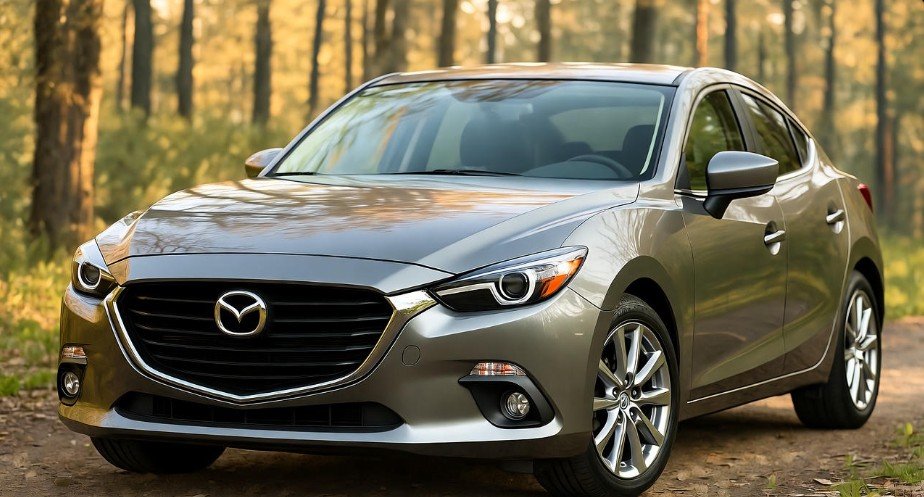How to Disable I-Stop Mazda: Ultimate Guide

Modern driving is full of conveniences, and Mazda has certainly stepped up with features like the I-Stop system. Designed to improve fuel efficiency and reduce emissions, this clever start-stop technology automatically shuts off your engine when your vehicle is at a complete stop and restarts it when you release the brake. While it sounds like a dream for eco-conscious drivers, not everyone finds it pleasant in real-world driving conditions. Heavy traffic, stop-and-go situations, and personal driving preferences can make the constant engine restarts feel more like a nuisance than a convenience. If you’ve ever felt frustrated with the I-Stop system or simply want more control over your vehicle, learning how to disable I-Stop Mazda can be a game-changer.
In this guide, we’ll take you through everything you need to know, from understanding what I-Stop does, why you might want to turn it off, to step-by-step instructions on disabling it safely. By the end of this article, you’ll feel confident managing this feature and tailoring your Mazda driving experience to your exact needs.
What Is I-Stop and Why Mazda Introduced It
Before diving into disabling the system, it’s important to understand the mechanics and purpose of I-Stop. Simply put, I-Stop is Mazda’s version of a start-stop system. When your car comes to a full stop—like at a traffic light or in a congested city intersection—the system automatically shuts off the engine. As soon as you release the brake pedal, the engine restarts seamlessly. This process reduces unnecessary idling, which can save fuel and lower emissions.
For many drivers, especially those who prioritize eco-friendly driving, I-Stop is a welcome feature. It can slightly improve your MPG and contribute to cleaner air in urban environments. However, for drivers who often navigate busy streets or prefer uninterrupted engine control, I-Stop can feel intrusive. Imagine being stuck in bumper-to-bumper traffic, and every stop triggers a mini restart. Over time, this constant on-off cycle can feel distracting or even stressful, making it understandable why some Mazda owners seek a way to disable it.
Reasons You Might Want to Disable I-Stop
While I-Stop offers environmental and efficiency benefits, there are legitimate reasons to turn it off, particularly for everyday convenience and comfort:
-
Heavy Traffic Hassles: If you spend a lot of time in stop-and-go traffic, constant engine restarts can feel disruptive.
-
Quick City Driving: Urban streets often require frequent stops. In these situations, I-Stop can interrupt the smoothness of your drive.
-
Personal Control: Some drivers simply prefer having full authority over their vehicle’s engine operation, feeling more connected to the driving experience.
-
Avoiding Minor Wear Concerns: Although Mazda designs I-Stop to be durable, frequent use involves repeated starter motor engagement, which some cautious drivers prefer to minimize.
Understanding these reasons helps you decide if disabling I-Stop aligns with your driving habits. For many, it’s not about fuel economy alone—it’s about creating a more enjoyable and predictable driving environment.
Step-by-Step Guide to Disable I-Stop in Your Mazda
Disabling I-Stop is straightforward, but it varies slightly depending on your Mazda model and year. Always consult your owner’s manual or a certified Mazda technician for precise guidance. Below, we outline a general approach that works for most Mazda vehicles:
Step 1: Park Your Vehicle Safely
Before interacting with the I-Stop system, ensure your car is parked in a safe location. Turn off the engine, engage the parking brake, and make sure the vehicle is stable. Safety is paramount, especially when adjusting or disabling any system that affects engine behavior.
Step 2: Locate the I-Stop Button
In most Mazda vehicles, there is a dedicated I-Stop button, usually found on the dashboard or center console. The button often carries an icon resembling an “A” with an arrow around it. This button allows you to activate or deactivate the system manually. Locating it is your first step toward taking control of I-Stop.
Step 3: Press and Hold the Button
Once you’ve identified the button, press and hold it for a few seconds. Depending on your model, the vehicle’s instrument panel will display a notification indicating that I-Stop has been turned off. This visual confirmation is your assurance that the feature is disabled. If your vehicle doesn’t show a notification, refer to the owner’s manual to ensure the process has been completed successfully.
Step 4: Start the Engine and Test
With I-Stop disabled, start the engine to confirm that the system remains inactive. In normal operation, the I-Stop indicator light will not illuminate when the engine is running. This simple check ensures that your driving experience is now uninterrupted by automatic start-stop cycles.
Things to Keep in Mind When Disabling I-Stop
While turning off I-Stop is generally safe, there are a few points to consider:
-
Fuel Economy: Disabling the system may slightly reduce fuel efficiency since the engine will continue idling at stops.
-
Emissions: Continuous engine operation increases emissions slightly, which may be worth considering for eco-conscious drivers.
-
Model Differences: Not every Mazda model has the same procedure. Always check your specific vehicle’s manual to avoid confusion or accidental system errors.
-
Professional Help: If you are unsure or encounter difficulties, visiting a certified Mazda technician can provide peace of mind and ensure no other vehicle systems are affected.
Practical Tips for Everyday Driving Without I-Stop
Once you’ve disabled I-Stop, your driving habits may subtly change. Here are a few tips to make the most of this adjustment:
-
Smooth Stops: Without automatic engine shutdown, focus on smooth braking to maintain fuel efficiency and comfort.
-
Mind Idling: While I-Stop saves fuel by shutting off the engine, you can still minimize waste by turning off the engine manually during longer stops, like waiting for extended periods.
-
Monitor Fuel Use: Keep an eye on your MPG, especially during city driving. This will help you understand the impact of disabling I-Stop on your fuel consumption.
-
Comfort Over Economy: Remember that the purpose of disabling I-Stop is comfort and control. Don’t stress minor fuel penalties if smoother driving is your priority.
Consulting a Mazda Technician: When to Seek Help
Even though disabling I-Stop is straightforward for most drivers, there are situations where professional assistance is invaluable. Certified Mazda technicians have the expertise to address system-specific quirks, provide model-specific guidance, and ensure that other vehicle functions aren’t affected. If your vehicle exhibits unusual behavior after disabling I-Stop—such as warning lights on the dashboard, irregular engine responses, or if the system automatically re-engages—a technician can troubleshoot these issues efficiently.
Another scenario to consider is if your Mazda is equipped with advanced safety or hybrid features. Some models integrate I-Stop with other systems like i-ELOOP regenerative braking. Disabling the system improperly could inadvertently affect these features. Consulting a professional ensures that your vehicle continues to operate safely while maintaining comfort and control.
Advanced Tips for Managing I-Stop in Different Driving Conditions
Disabling I-Stop isn’t always about turning it off permanently. For drivers who alternate between urban congestion and open highways, understanding how to manage the system can improve convenience and efficiency. Here are some practical strategies:
-
Partial Engagement: On longer trips with minimal stops, you may keep I-Stop active to benefit from fuel savings during infrequent stops.
-
Temporary Disabling: In city traffic or short errands, temporarily disabling I-Stop enhances control and reduces stress from repeated engine restarts.
-
Manual Intervention: Some drivers prefer manually toggling the system off at the start of their drive and reactivating it later. This approach balances comfort and fuel efficiency depending on the route.
These techniques offer flexibility and allow drivers to tailor the I-Stop system to their daily driving patterns, rather than choosing an all-or-nothing approach.
Common FAQs About How to Disable I-Stop Mazda
Here are some frequently asked questions that Mazda owners often have regarding the I-Stop system and its deactivation:
1. What is I-Stop in Mazda?
I-Stop is Mazda’s start-stop technology designed to automatically turn off the engine when the car is stopped. This reduces fuel consumption and emissions during idle periods.
2. Why would I want to disable I-Stop?
Many drivers prefer to disable I-Stop in heavy traffic or during frequent stop-and-go driving situations. It can also be a matter of personal comfort and preference.
3. Is it safe to disable I-Stop?
Yes. Disabling I-Stop does not compromise vehicle safety. However, fuel consumption may increase slightly since the engine will continue running at stops.
4. Will disabling I-Stop affect my Mazda’s warranty?
Generally, pressing the I-Stop button to disable the feature does not void your warranty. Any modifications beyond this, however, should be verified with a Mazda dealer.
5. Can I permanently disable I-Stop?
While you can turn it off each time you start your car, Mazda does not typically allow permanent deactivation without technical intervention. Manual control is usually reset upon vehicle restart.
6. What if I-Stop keeps turning on automatically?
This may occur if the system detects optimal fuel-saving conditions. Consulting a Mazda technician can clarify whether your model allows temporary disabling or requires adjustments.
7. Does turning off I-Stop save battery life?
Turning off I-Stop slightly reduces the starter motor usage, but Mazda designs the system to handle repeated starts. Battery wear is generally not significant, but this may vary with driving habits.
Comparison Table: Driving With vs. Without I-Stop
| Feature | With I-Stop Active | With I-Stop Disabled |
|---|---|---|
| Engine Shutdown at Stops | Yes, automatically | No, engine remains running |
| Fuel Efficiency | Higher in city driving | Slightly lower |
| Emissions | Reduced | Slightly higher |
| Comfort in Stop-and-Go Traffic | Can feel disruptive | More consistent engine operation |
| Driver Control | Partial | Full |
| Starter Motor Usage | Frequent | Minimal |
This table helps visualize the trade-offs between keeping I-Stop active versus disabling it, allowing drivers to make informed choices based on their driving habits.
Final Thoughts: Tailoring Your Mazda Experience
At the end of the day, how to disable I-Stop Mazda boils down to personal preference and driving conditions. Some drivers thrive on fuel efficiency and environmental impact, embracing the automatic start-stop system. Others value uninterrupted engine control, particularly in busy urban environments or during frequent errands.
Disabling I-Stop is simple, practical, and reversible. By following the step-by-step instructions and consulting your Mazda owner’s manual, you can enjoy a more controlled driving experience without sacrificing safety. Remember, the goal is to create a driving environment that suits you—whether that’s the smooth rhythm of a constantly running engine or the eco-friendly pauses of an engaged I-Stop system.
Ultimately, Mazda designed I-Stop to enhance convenience and efficiency, but you have the freedom to adjust it to your liking. Whether you choose to disable it temporarily or keep it off entirely, understanding the system gives you the confidence to tailor your vehicle to your lifestyle.





